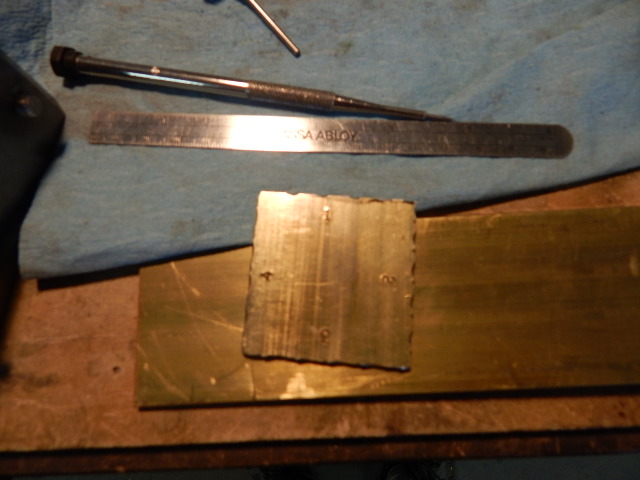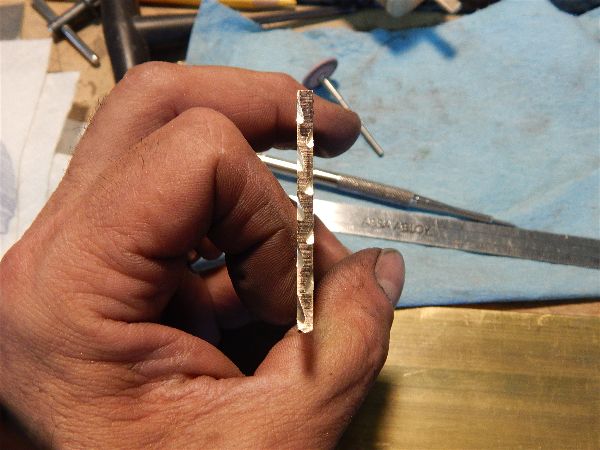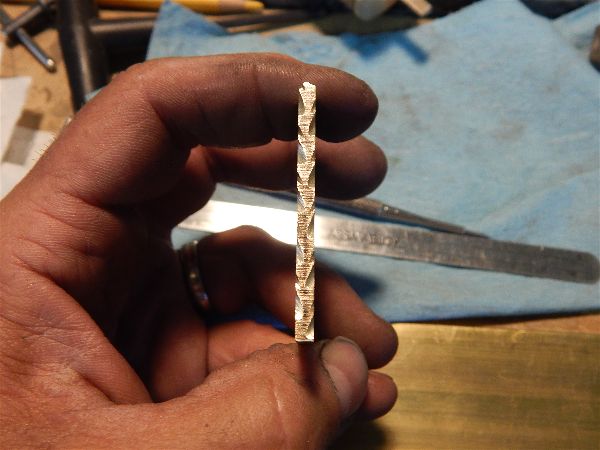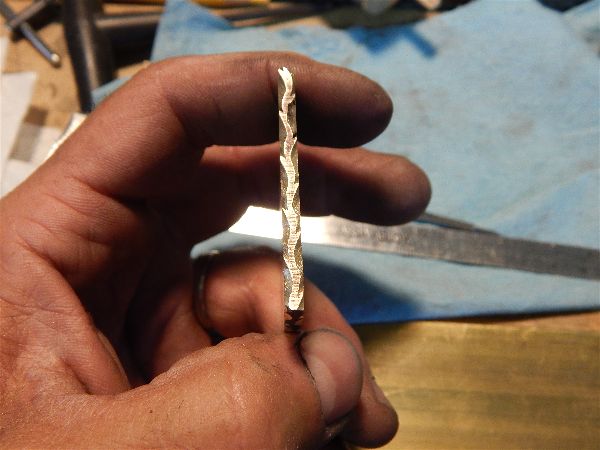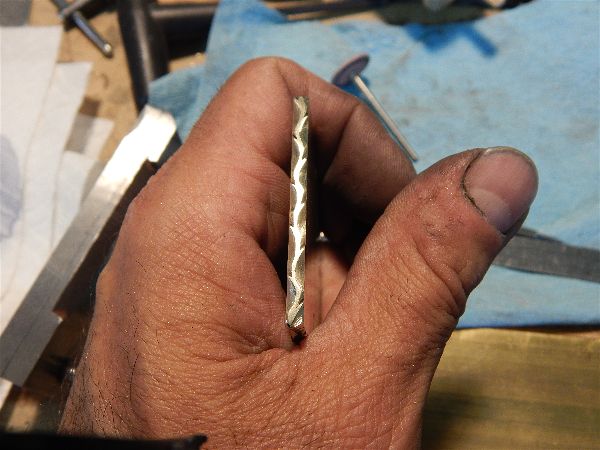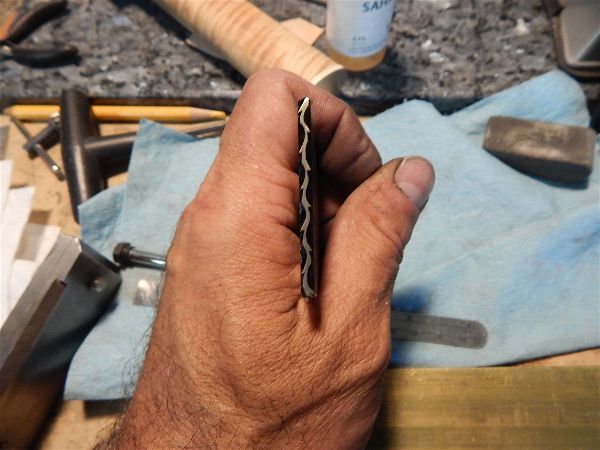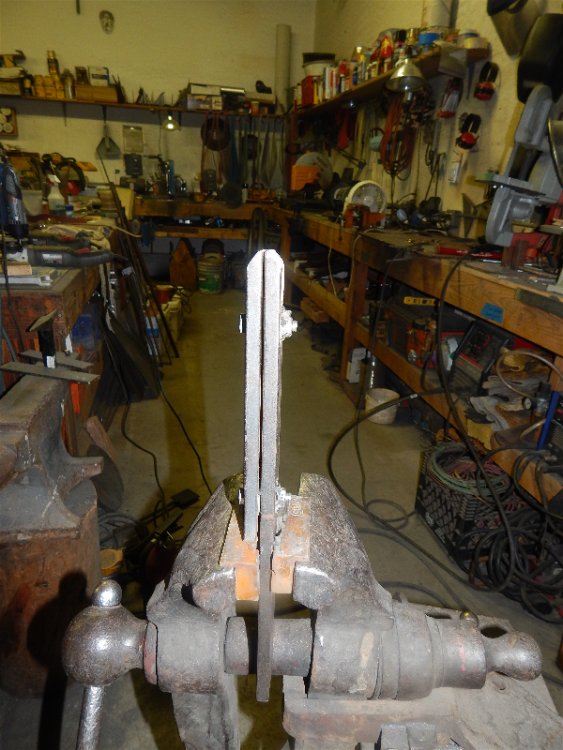Hello fellow smiths,
I just started doing some file work on a couple hunters, and I'm realizing I don't really know what I'm doing. I have a couple questions that maybe folks can help me with:
1) What kinds of files do you like to use? Suppliers? Brands?
2) What is your working sequence? I assume most do their file work right before hardening, but perhaps others use diamond files after hardening/tempering?
3) How do you finish it up so it looks nice and clean? The smooth files I have don't seem smooth enough for finished work. Would polishing stones work well for this? I seem to round too many corners when I try getting in there with sand paper.
Any advice is appreciated. Thanks!
Steve
Follow
When I get home I will answer your questions. In the meantime, do an internet search for the file work video by Duane Dushane and buy it. He goes over the basics and finishing of three styles: rope, S, and Vine. Worth every penny
Joshua States
www.dosgatosforge.com
https://www.youtube.com/channel/UCdJMFMqnbLYqv965xd64vYg
https://www.facebook.com/dos.gatos.71
Also on Instagram and Facebook as J.States Bladesmith
“So I'm lightin' out for the territory, ahead of the scared and the weak and the mean spirited, because Aunt Sally is fixin’ to adopt me and civilize me, and I can't stand it. I've been there before.â€
Will second Duane Dushane's video. I have it and it'll give you all the info you need to get going the right way.
I do not typically put any file work on fixed blades because I really do not like the way it looks. I do like it a lot on smaller blades like folding knives. I do quite a bit of it on the fittings and hardware (guards, spacers, frames, liners, etc.)
Here's my info:
Files: Get a few chainsaw files in various sizes from 1/8" up to about 3/16". Get a set of these in #2 or #3 cut: http://www.nicholsontool.com/files/sets/nicholson-22062nn-6-pc-4-assorted-american-pattern-file-set.html and get a set of these in #4 cut: http://www.nicholsontool.com/files/sets/nicholson-37767-assorted-files-cut-4.html You will probably need a couple #4 in the Tri-square and half-round because you will grind one side "safe" for certain operations. Shop around. Most online tool suppliers (MSC, McMaster Carr etc.) sell them as well as knife making suppliers and jewelry suppliers (Rio Grande, Otto Frei) I also have a couple of these: https://www.texasknife.com/vcom/product_info.php?cPath=884_191&products_id=1059
Also, a jeweler's saw comes in really handy for starting cut lines. You will need a file jig (you can make one, see the topic of the month for guard fitting or buy one) and a good fine point carbide scribe (or a digital caliper) for lay out work.
For blades you file after rough grind and before HT. Some guys will leave the black in the bottom of the file work and just clean off the top. Makes for a dramatic effect. You can also clean it all up and polish to a shine.
For fittings it's pretty much the last thing you do before glue-up. Everything is finish ground and hand sanded to 200/320 grit before filing and polished to 400/600 before buffing (depends on the material, copper alloys like shibuichi and brass or NS are pretty soft and do not need finer sanding. 416 needs sanding to 600 grit minimum before buffing)
Finishing: For round areas (rope, vine, and such) get a bunch of 6" long steel rods from 3/32" up to 1/4". You will wrap a piece of sand paper (single layer only) around the rod and go to town. When you have a few safe edge files. you do the same with them for the V-notches and other shaped cuts.
Layout is everything. File work only looks good when the spacing is consistent and uniform. A 32nd of an inch off looks like a fat lip on a squirrel.
Get some 2" x 1/8" flat brass bar and cut it into 2" squares to practice patterns on. Most patterns have 4 major steps. Do step 1 on all 4 sides. do step 2 on 3 sides. do step 3 on 2 sides and step 4 on one side. Then you have a handy reference to keep on the bench for later. I have some pics of this somewhere, I will look for them.
Joshua States
www.dosgatosforge.com
https://www.youtube.com/channel/UCdJMFMqnbLYqv965xd64vYg
https://www.facebook.com/dos.gatos.71
Also on Instagram and Facebook as J.States Bladesmith
“So I'm lightin' out for the territory, ahead of the scared and the weak and the mean spirited, because Aunt Sally is fixin’ to adopt me and civilize me, and I can't stand it. I've been there before.â€
The practice pieces.
Most filework patterns have about 4-6 steps (other than layout), and can be reduced down to 4, when you consider that some steps are identical to one another, just on opposite sides of the work piece. I use a method Duane Dushane has in his video with a 2" square piece of 1/8" thick brass bar and number the sides 1-4. This is a practice piece demo I did for Vine pattern.
Step 1 is cutting the lobes in on each side.
Step 2 is cutting the thorns in.
Step 3 is starting to remove the excess and create the curves.
Step 4 is smoothing out the curves, sharpening up the thorns and generally cleaning up the shape.
After a sanding to 600 and buff (red & green) I blacken the whole thing and lightly scrape the top with 9 micron paper to see where I am at. This still needs a little work on a couple of thorns and some curves.
Joshua States
www.dosgatosforge.com
https://www.youtube.com/channel/UCdJMFMqnbLYqv965xd64vYg
https://www.facebook.com/dos.gatos.71
Also on Instagram and Facebook as J.States Bladesmith
“So I'm lightin' out for the territory, ahead of the scared and the weak and the mean spirited, because Aunt Sally is fixin’ to adopt me and civilize me, and I can't stand it. I've been there before.â€
Thank you, Joshua, for all the information. I appreciate it.
I'll check out that video so I get started on the right foot. I like the idea of putting patterns onto square pieces of brass. I've seen that before but had forgotten about it.
Steve
Thank you Joshua, just ordered the video, very nice work.
You are most welcome guys. I hope it helps. When you get started on something, post your pics up in the What did you do in your shop today? thread and let's talk shop.
Joshua States
www.dosgatosforge.com
https://www.youtube.com/channel/UCdJMFMqnbLYqv965xd64vYg
https://www.facebook.com/dos.gatos.71
Also on Instagram and Facebook as J.States Bladesmith
“So I'm lightin' out for the territory, ahead of the scared and the weak and the mean spirited, because Aunt Sally is fixin’ to adopt me and civilize me, and I can't stand it. I've been there before.â€
I don't generally file work the blade. I don't care for the look unless there's a theme that compels me to. Joshua's rundown is very clear and essentially the same as mine. I do have a few "pet" filings that I like. But for me less is sometimes more. I consider file work like jewelry on a lady. Some is very tasteful, but it can become gaudy pretty quick after that. Some knives carry it well so it's a matter of taste.
As for resources; the ABS Hammer Ins sometimes have file work tutorials. Attend every one you can even if file work is not on the schedule. You can often get impromptu conversations started between classes or at lunch and learn a lot.
|quoted:
I consider file work like jewelry on a lady. Some is very tasteful, but it can become gaudy pretty quick after that. Some knives carry it well so it's a matter of taste.
As for resources; the ABS Hammer Ins sometimes have file work tutorials. Attend every one you can even if file work is not on the schedule. You can often get impromptu conversations started between classes or at lunch and learn a lot.
I like the jewelry analogy. I always used the Salt in cooking analogy, but the idea is the same! One mistake I have made that I want to caution folks about when it comes to file work is knowing when it is appropriate. The knife should look good all by itself without any pimping from the addition of file work. In my early days, I attempted to take a knife that really wasn't "good" and add file work to make it "look good". This was putting lipstick on a pig. As Lin has said before, "a knife should look good naked."
Lin also brings up the hammer-ins as a way to expand your skills through networking. I couldn't agree more. I know there are more than a couple of threads on this forum with file work tutorials and links to YouTube videos that ABS smiths have posted. I seem to remember Craig Brewer posting some very informative projects.
Does anyone know if Joe Keeslar's book on handles & guards covers any of this?
Joshua States
www.dosgatosforge.com
https://www.youtube.com/channel/UCdJMFMqnbLYqv965xd64vYg
https://www.facebook.com/dos.gatos.71
Also on Instagram and Facebook as J.States Bladesmith
“So I'm lightin' out for the territory, ahead of the scared and the weak and the mean spirited, because Aunt Sally is fixin’ to adopt me and civilize me, and I can't stand it. I've been there before.â€
I never liked firework untill I started.to look at 15-17th century knives, then I started to notice these little file worked details, the sigestion of a scroll at the heel or a French curve in the spine, bolsters filed with moldings like the base of a roman collum. I started to realise that File work could be 3d it could add to the flow And lines of the work it could be sculpural. After that i begai to look at it in a new light and appreciate it when used well. I have also begun to incorporate it more and more into my work.
I think my dislike was much as Lin's, like he said it can be to much making it look cheap and gaudy but when Incoperated into the work as a holistic part of the design the hole can be greater than the sum of it's parts.
Mp
One more tip about file work, if I may.
I made myself a file working jig/holder tool. Dwayne Dushane shows something like this one in his video on file work. Dwayne's is made from 1-1/2" square bar stock and I didn't have the patience to make one of those. So, I dug around in the scrap heap and found some 3/8" by 1-1/2" flat and a couple of 5/16" bolts. After using it, I was grateful to have done it. This really makes getting around the work piece much easier than using a bench vice and it holds the work piece like, well like a vice. I don't have to lean over anymore either. That was killing my neck.
I do understand why Dwayne has one out of such heavy stock though. There is a little flex in mine that I'd love to eliminate that Dwayne probably doesn't have in his.
Joshua States
www.dosgatosforge.com
https://www.youtube.com/channel/UCdJMFMqnbLYqv965xd64vYg
https://www.facebook.com/dos.gatos.71
Also on Instagram and Facebook as J.States Bladesmith
“So I'm lightin' out for the territory, ahead of the scared and the weak and the mean spirited, because Aunt Sally is fixin’ to adopt me and civilize me, and I can't stand it. I've been there before.â€

